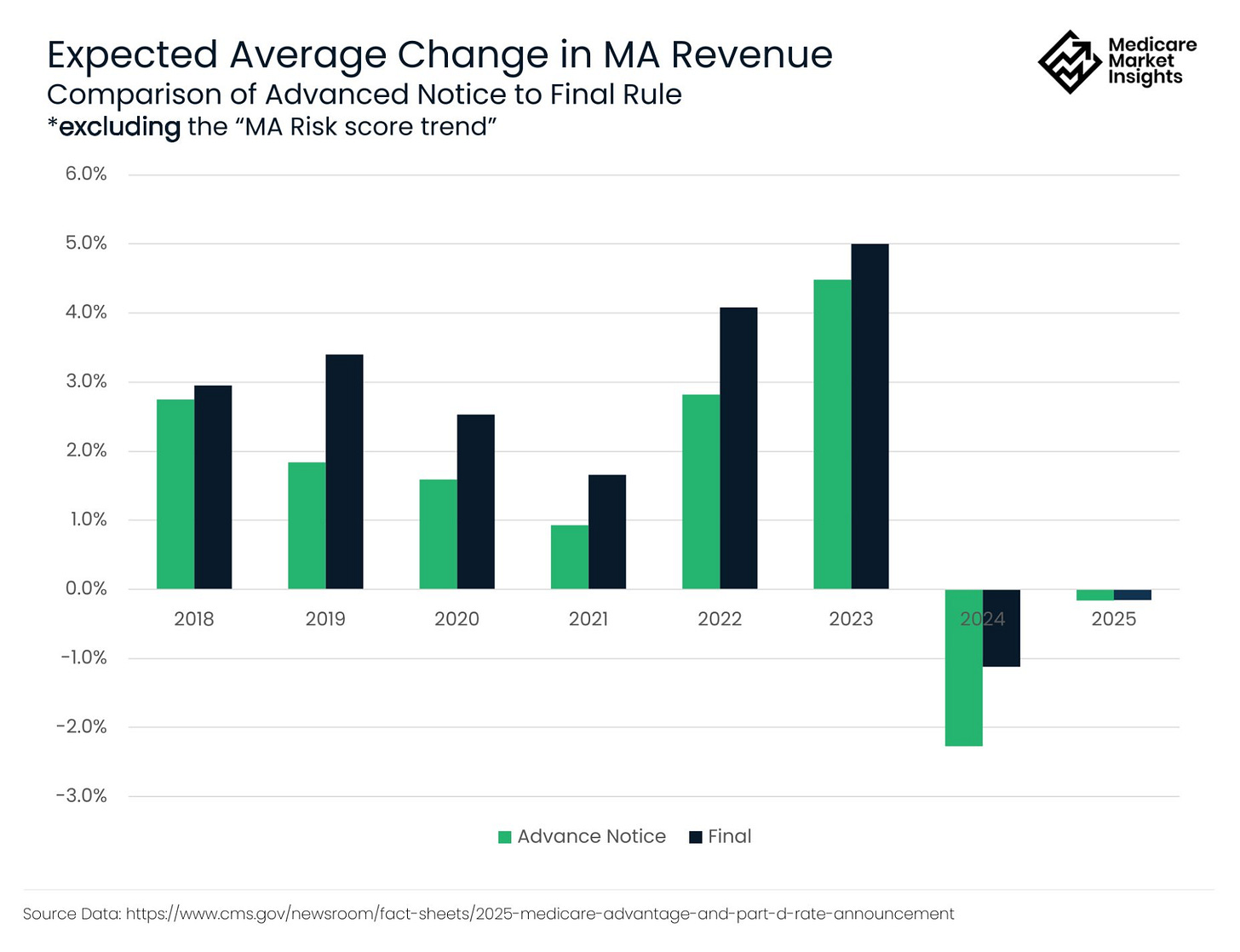Wheels In — Intro + Opening Thoughts
This week, we finish the series on Pillars of Innovation with Pillar 3 — Implementation of Technology. Health care has long lagged behind other sectors in this regard, much to its detriment. As the rest of the world has become digitized, medicine has developed an uneasy relationship with tech. Instead of improving documentation and data capture, EHRs have made doctors less efficient. Use of telehealth was paltry prior to the pandemic and has seen a steady decline from COVID-19 highs. In a FFS world, it’s more difficult to demonstrate the ROI of digital health tools. Well-designed, value-based arrangements can solve this problem. Furthermore, as artificial intelligence and machine learning models improve, the dream of precision medicine and personalized care can be achieved.
With that, we’re on the final pillar, Pillar 3: Implementation of Technology.
Dem Dry Bones
From the EIC’s Desk
Health care technology experienced a remarkable surge from 2020 to 2022. While the digital health sector was expanding before the pandemic, COVID-19 exposed gaps in care and revealed significant delays in adopting technology-enabled care delivery tools. However, enthusiasm has diminished in recent years. Artificial intelligence has overshadowed health tech, and the end of the ZIRP has marked the end of inflated valuations and abundant capital. Health tech has now entered a new phase, with growing pressure to demonstrate solid business fundamentals and clinical relevance.
Digital health solutions must prove ROI. In a FFS model, convincing patients, employers, payers, or physicians to pay for your solution is difficult. Many health tech founders say their solution makes sense in a value-based care (VBC) model. However, VBC models aren’t widespread enough, and demonstrating ROI takes time. Data must be collected and reported over many years, an eternity for startups.
I’m excited about the potential for technology to serve as the keystone of successful VBC implementation and health care innovation. (My recent presentation at Duke’s Collaborative Health care Summit covered this very topic.) Technology can support the goals of VBC through three mechanisms:
Better patient engagement and experience
Robust data collection and analysis
Improved insights and elevated processes
Patients who take an active role in managing their health conditions (patient activation) have better outcomes, especially for MSK conditions. Unfortunately, in today’s health care landscape, we simply spend less time engaging with patients. The downside of the shift to ASCs is that there is less time for education. Tech tools can address this problem.
Asynchronous messaging, chatbots, and large language models can extend health care interactions beyond the walls of the clinic or surgery center. These tools allow for multiple "touches" along the care journey. When implemented properly, they reduce costs without increasing the workload of clinicians.
"Data is the new oil." Hyperbole? Not when it comes to health care innovation. It’s clear that to succeed in value-based care, you must demonstrate that what you’re doing works. It’s one thing to say you’re getting better outcomes at a lower cost; it’s another to prove it.
You can’t improve what you don’t measure. Patient-reported outcome measures (PROMs) are quickly becoming the metric by which the effectiveness of medical interventions is gauged. Just yesterday, the Centers for Medicare & Medicaid Services implemented mandatory PROMs reporting for inpatient joint replacement procedures. Failure to meet the requirements could result in a 2 to 4 percent reduction in all of a hospital’s Medicare Part A claims.
Collecting PROMs is challenging and expensive, but tools like remote patient monitoring (RPM) and remote therapeutic monitoring (RTM) help. The Peterson Health Technology Institute report on Virtual MSK solutions raised concerns that RPM and RTM solutions increase spending in FFS. However, the authors concede that RPM and RTM may play a key role in value-based care. One study demonstrated a $656 per patient cost savings with a 54.4 percent reduction in complications for joint replacement patients who used a digital patient engagement platform that included remote monitoring.
“If you can’t measure it, you can’t improve it.” — Peter Drucker
Finally, predictive and causal AI will play an increasing role in realizing the promise of value-based care. We don’t want low-value care, but current methods of determining what constitutes “low value” are crude. We lack sophistication in making treatment decisions at the patient level.
Highly valuable care is tailored to the patient—personalized and precise. While chatbots are cool, AI and machine learning-driven insights are truly transformative. What if VBC programs were built on predictive and causal metrics capable of accurately determining if care was, in fact, high value?
A fascinating study used machine learning to propose a “tiered patient-specific payment model that reflects patient complexity for reimbursement.” Such a model, if widely implemented, could solve the race-to-the-bottom and lack-of-net-savings problems that plague existing models.
The promise of technology is great, but hype must match reality. Tech has also struggled to demonstrate ROI in a traditional FFS setup. A shift to VBC greatly improves the use case for digital health solutions. In a sense, VBC needs health tech, and health tech needs VBC.
- Ben
Small Incisions
Quick Takes on Timely Topics
Insurers Pocketed $50 Billion From Medicare for Diseases No Doctor Treated (Wall Street Journal)
More negative attention for Medicare Advantage. Accurately documenting medical diagnoses is an important aspect of delivering high quality care. Payment mechanisms should account for high-risk, complex care delivery, but upcoding for the sake of higher reimbursement is not the solution. Trading fee-for-service for fee-for-diagnosis is not VBC.
AI-Driven Behavior Change Could Transform Health Care (Time)
Technology and health care transformation are my two biggest professional passions. As I hope this week’s edition of TSR shows, I’m a believer that thoughtful tech implementation will play a key role in achieving sustainable care evolution. AI-driven behavior change sounds cool and is something I’d probably try myself. That said, what’s proposed here misses the mark for a few reasons. Informed, well-reasoned skepticism of health tech leads to better, more impactful solutions—even solutions backed by SV elites like Arianna Huffington and Sam Altman.
CMS pitches 2.8% physician pay decrease for FY2025 (Fierce Health care)
The movie “Groundhog Day” has nothing on the Medicare Physician Fee Schedule. Another year, another round of 2 to 3 percent proposed cuts/expiration of payment increases. The conversion factor would drop from $33.29 in 2024 to $32.36 next year. Adjusted for inflation, that’s a 31.5 percent reduction compared to when I started practice in 2008. Cue another round of outrage, threats to drop Medicare, and last-minute cut “reductions” that feel like wins but just cover up losses. The other proposals here shouldn’t be overshadowed. CMS continues its attempts to support advanced primary care, the MSSP, and telehealth. Cognitive dissonance?
H1 2024 digital health funding: Resilience leads to brilliance (Rock Health)
With a waning number of unlabeled rounds, the funding environment for digital health companies seems to be improving. News is especially good for Series A startups, especially those incorporating artificial intelligence. One in three dollars raised in the first half of 2024 went to companies leveraging some form of AI. Here’s hoping we’re not creating another bubble.
Is Private Equity A Villain In Healthcare? (Forbes)
An eyebrow-raising take from the always excellent and well-reasoned Professor Ge Bai. Just as no health care payment model is inherently good or inherently bad, no method of financial backing is inherently evil. The key question is: are you creating value or extracting value? More to come on this in next week’s edition of The Surgeon’s Record!
The Gold Standard
Polling the Crowd in Search of Consensus
The Light Box
Health Care Visuals
From the Gallery
Amplifying Community Voices
Wheels Out — Signing Off and Looking Ahead
So concludes our final article in the three-part series on Pillars of Innovation. The key to advanced specialty care delivery models is weaving together value-based payment models, alternative sites of care, and health care technology. Few have achieved this harmony … yet.
Next week, we’ll present our first article focused on health care advocacy, a critical component of our mission with “The Surgeon’s Record.”
Teaser: How do we ensure legislation meant to protect patients and physicians doesn’t instead stifle innovation?
See you then,
Ben Schwartz, MD, MBA
Editor-in-chief / Senior Clinical Fellow









